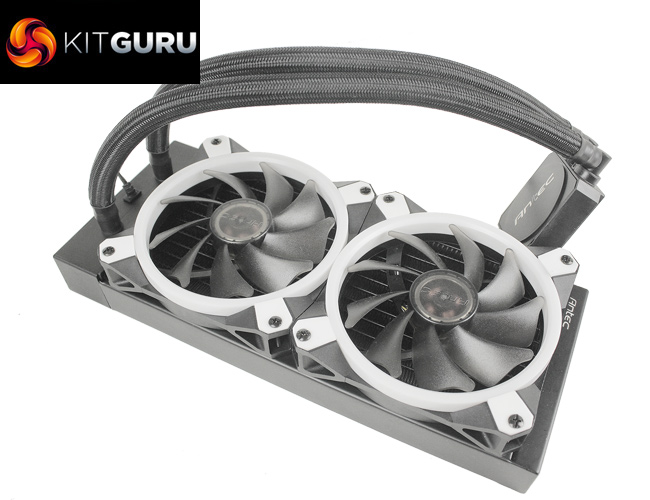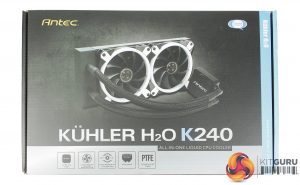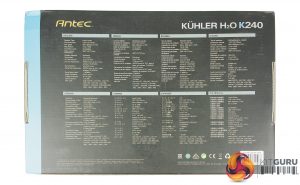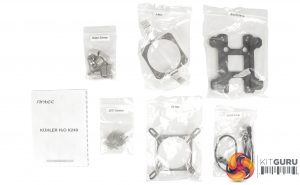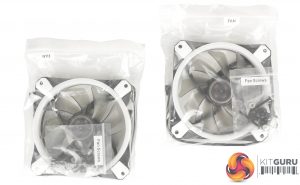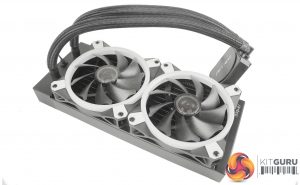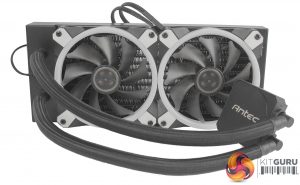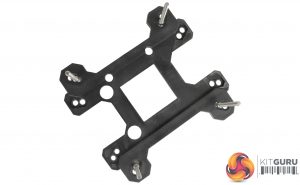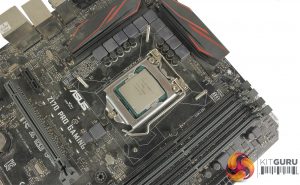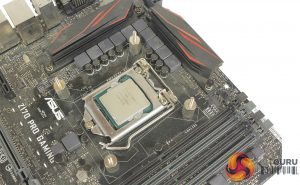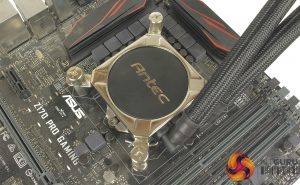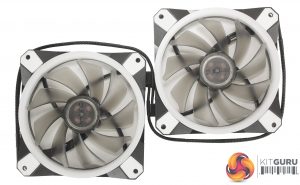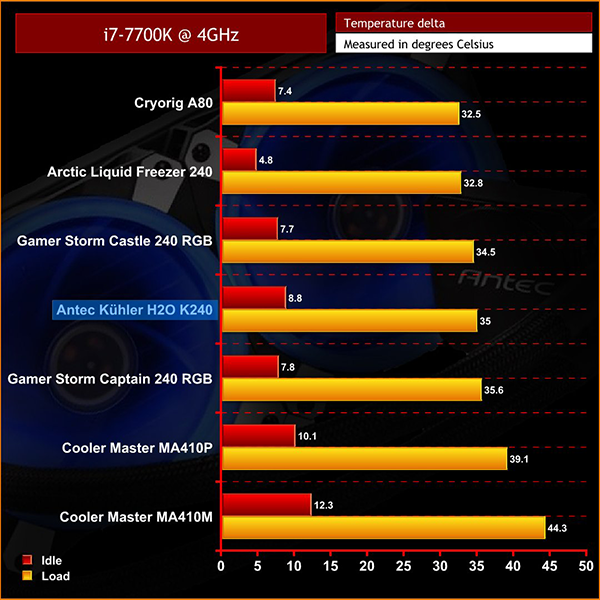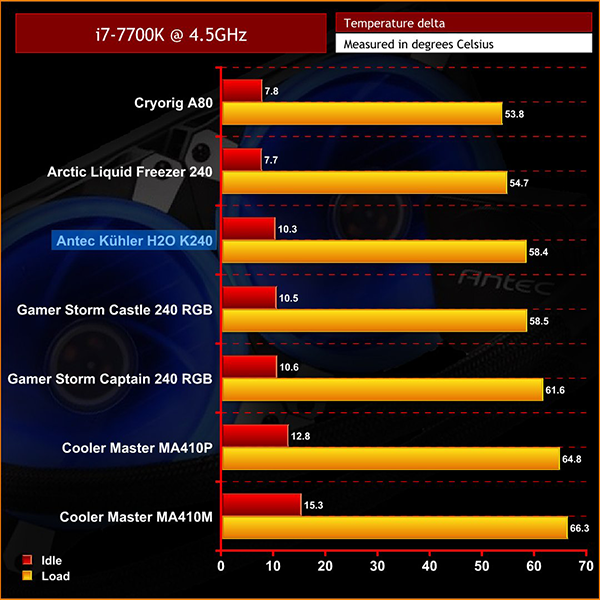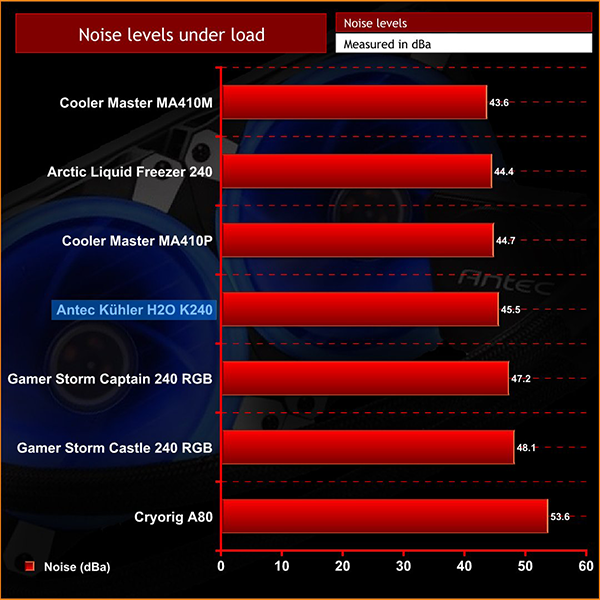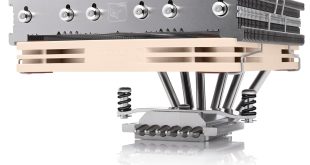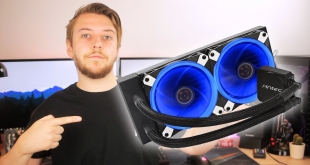
When building a new system, you have either the choice of the stock Intel or AMD cooler (if provided), or travel down the aftermarket route. This can open up a host of options. Air or liquid, size and price all need to be considered and it can be tricky to peg down the one most suited for your chosen need.
Antec has attempted to address this with a competitively priced 240 mm AIO liquid option – the Kühler H2O K240. This cooler supports a multitude of different CPU sockets but does look less flashy than the host of available RGB LED options. At £59.99 it looks to be offering good value for money, but today we find out if that is the case.
Specification:
- Model: K240
- Radiator Material: Aluminum
- Radiator Dimensions: 288 × 120 x 27mm
- Fan Dimensions: 120 x 120 x 25 mm
- Fan Speed: 900 – 1,800 RPM (PWM) ± 10%
- Fan Air Flow: 73.31 CFM (Max)
- Fan Noise Level: 20 – 30 dBA
- Fan Connector: 4-Pin (PWM)
- Pump Connector: SATA Power
- Water Pressure: 1m ± 0.2m
- Flow Rate: 1.5L/min
- CPU Block Dimensions: 8 × 100 × 315mm
- Tubing Dimensions: 8 x 10 x 350mm
- Intel socket compatibility: Intel LGA 2066, 2011-V3, LGA 2011, LGA 1366, LGA 1156, 1155, 1151, 1150, 775
- AMD socket compatibility: AMD AM4, AM3+, AM3, AM2+, AM2, FM2+, FM2, FM1
The Antec Kühler H2O K240 packaging shows a nice large picture of the cooler itself, while also highlighting some of its more unique features such as its SATA power connection for the pump, and PTFE (teflon coated) tubing. A reference to the ultra-thin CPU block is also present, however, it is worth noting that the block does not have the pump built in as advertised. The pump is actually mounted in the radiator.
In the box we find the cooler itself, two 4 pin PWM blue LED fans and an accessory pack.
A warranty/installation guide is included, a host of mounting brackets and pieces for all current CPU sockets, as well as some older ones.
Alongside mounting hardware, a 4 pin PWM splitter cable is included for connecting both the fans to your motherboards CPU header. It's nice to see this is braided to match the braid on the fans.
All of the mounting hardware is separated to speed up the installation process, and this is the same for the fans which each come bagged with case fan screws, as well as both long and short radiator screws.
The cooler itself feels nice and solid and the tubing is braided with a Teflon coating which is good to see. It looks and feels tough and at 35cm long, there is plenty of tubing to reach around your case. The radiator itself with the integrated pump is slightly longer than a typical 240mm rad but only by a centimetre or so – 13mm when compared to a Corsair Hydro Series H100i.
The block is low profile at 50mm tall and pretty simple when compared to other AIO liquid cooler blocks. There are no LEDs, and no pump within the block – so no cables to trail across your motherboard.
The installation process is pretty simple thanks to clear instructions and well-labelled mounting hardware. You start by preparing the backplate by passing the four long screws through the specified socket holes. The backplate can then be passed through from the rear of your motherboard.
With the backplate fitted you then screw on the four standoff nuts. One issue I encountered at this stage is that the nuts are a little tight to thread and screw on and as there are no clips or retention brackets for the long screws that pass through your motherboard, they had a tendency to move away from the backplate – leaving me spinning the nut and screw together.
With the backplate secured you just need to place the top mounting bracket over the CPU block and line it up with the protruding backplate screws. With the CPU block in place, the four top mounting nuts can then be screwed on, to firmly hold the block in place.
With the cooler block mounted, you can install the included fans, oriented dependent on your case layout and personal preference. Both fans can then be connected to the included 4pin splitter, and then to your motherboard CPU fan header. As the pump's power cable uses a SATA connection, this can then be connected directly to your power supply.
Installation is almost completely tool-less with the exception of the fan screws which is nice to see, and the pump's power cable being SATA does help with cleaning up cable management. Installation for me only took around 7 minutes but installation for AMD is quite a bit simpler, as the backplate isn’t required.
All you need to do is swap out the top mounting bracket for the included AMD one, and clip each side to the mount built onto the motherboard.
To test all CPU coolers, we devised an easily repeatable test with no variables other than the coolers themselves. This ensures that figures from every cooler we test are comparable with each other.
Test rig
At KitGuru we have recently updated our testing setup, and now test temperatures on the Z170 platform. For the CPU we are testing with the Intel Core i7-7700K installed in a ASUS Z170 Pro Gaming motherboard. For RAM we have a single 8GB stick of Geil EVO X RGB for some added bling running at 3200MHz, and storage is handled by a 120GB SanDisk SSD Plus. Powering our bench is a Seasonic Prime Platinum 650W PSU.
The test process
For testing, we run a number of tests including 4 separate temperature readings per cooler. We first measure the idle temperature of the i7-7700K locked in at 4.0GHz before measuring its temperature under load at the same frequency.
For a representation of overclocks, we run the i7- 7700K at 4.5GHz with a 1.275 Vcore applied both at idle and load. The temperatures we present are temperature deltas, where the ambient temperature of the testing environment is deducted from the temperature taken from the CPU for both idle and load. We are aware that a 4.5GHz overclock with a 1.275 Vcore applied is not representative of the best setting possible for the i7-7700k, but this does allow us to simulate performance of coolers whether you are using a less powerful CPU such as an i3 or i5 processor, or a more powerful hotter CPU like our overclocked i7-7700k.
An idle reading comes from leaving Windows on the desktop for 15 minutes. A load reading comes from running Prime95’s (version 26.6) Small FFTs test for 15 minutes – enough time for temperatures to plateau. We use HWInfo64 v5.82 to measure temperatures.
Noise output
We measure noise levels with our sound meter positioned 1 foot away from the test bench. The peak noise level is presented. We have measured the noise floor (i.e. ambient noise levels of the room) to be 34 dBa, and when tested at stock clocks, the vast majority of coolers do not emit noise levels above this figure. Thus, we present one chart with noise levels taken during our overclocked CPU test run.
Temperatures
All temperature charts are sorted with lowest load temperatures at the top.
With our 7700K at 4GHz performance looks pretty good with the K240 sitting in between the both Gamer Storm Castle and Captain, and with the exception of being around 1 degree hotter at idle, the Antec basically came out on par.
When overclocked, the same trend is displayed although the K240 does move between the Arctic Liquid Freezer 240, and the Gamer storm Castle 240. This is slightly better performance when our 7700k was overclocked, but still pretty standard results for a 240mm AIO liquid cooler.
Noise levels also follow this trend, with the K240 sitting in the middle of our currently tested coolers. It only sits 2dBa behind our quietest cooler tested – the Cooler Master MA410M – but cooling performance at both 4GHz and 4.5GHz is much better with a difference of around 10 degrees in both instances.
Overall, while it’s by no means the best cooler we have tested, the Kühler H2O K240 does show very similar performance to other 240 AIO liquid coolers with dual fan configurations. It's not groundbreaking but still delivers solid results.
It's not the quietest cooler we've ever tested either, but compared to other AIOs the K240 is actually the second quietest 240mm liquid cooler tested so far on our new testing setup.
So taken on its own, the K240 is certainly decent but nothing special. The real kicker is the pricing – at £59.99 the Kühler H2O K240 is the cheapest 240mm AIO liquid cooler we've tested, in some instances by around £40 to £50, so it actually looks pretty competitive.
When I say competitive, if you consider the Cooler Master MA410M tested previously shows higher temperatures, by up to an extra 10 degrees, and is available for the same price – the K240 looks like a pretty good deal.
Overall, although not super feature-laden, what's really impressive is that with fancy LED lighting stripped away Antec have managed to produce a really high-quality cooler, at a competitive price. The standout feature is the lower profile CPU block, with the pump mounted in the radiator, and although this is not industry changing, it does help with installation and an overall cleaner build.
It’s a simple no-nonsense cooler that feels reassuringly tough. There doesn’t appear to be any area where Antec has had to make sacrifices to keep the price competitive, and at £60 it's simply very well priced for a 240mm AIO.
The Kühler H2O K240 is currently available from Overclockers UK for £59.99 inc. VAT HERE.
Pros
- Easy to install for a first time builder.
- Clean aesthetic and impressive build quality.
- Really competitively priced at £59.99.
Cons
- Performance could be better when compared to most 240mm AIO coolers.
- LED fans being blue does limit aesthetic compatibility for those with a particular colour of build in mind.
KitGuru says: If you are considering a new budget build with an unlocked CPU, and would like to dabble in some overclocking, the K240 is a great choice. Ease of installation alongside the really premium build quality is likely to impress, especially when considering the K240 only costs £59.99.
Be sure to check out our sponsors store EKWB here
 KitGuru KitGuru.net – Tech News | Hardware News | Hardware Reviews | IOS | Mobile | Gaming | Graphics Cards
KitGuru KitGuru.net – Tech News | Hardware News | Hardware Reviews | IOS | Mobile | Gaming | Graphics Cards


